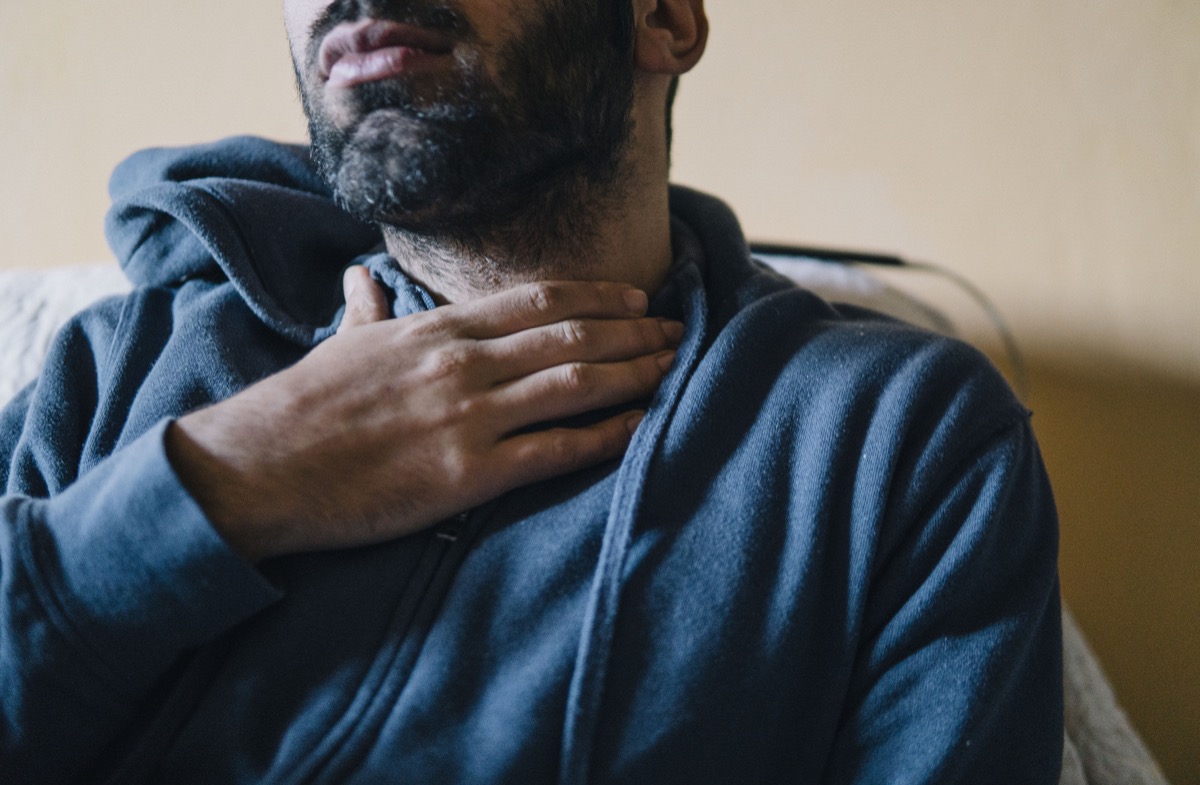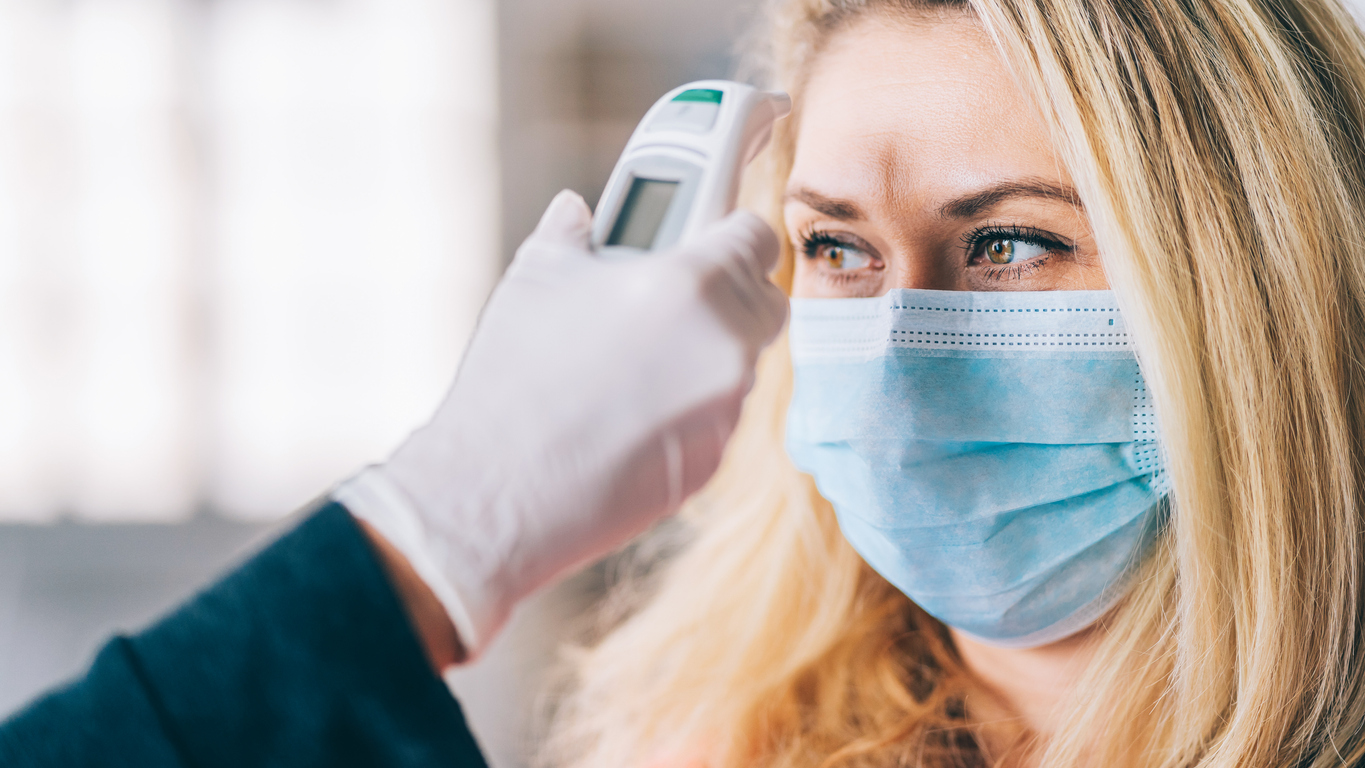You’re probably familiar with the symptoms of the flu: fever, fatigue, a sore throat, headaches, body aches, runny nose, and sneezing. Most often, the flu also presents with a bad cough. In more serious cases, it can progress to pneumonia, which can add shortness of breath and rapid breathing to that list of symptoms. Unfortunately, much of this closely mirrors the experience of having COVID-19, complicating a clear diagnosis. That’s why McNeil recommends looking for COVID’s more “wacky” symptoms, which could offer insight into a person’s condition. “The one sign that really distinguishes the two infections is that many COVID-19 victims suddenly lose their sense of smell—not because they have a stuffy nose, but because they don’t register even strong odors like onions or coffee,” explains McNeil. In fact, in a new study published on Oct. 1, a team from University College London studied 590 patients in the U.K. who reported suddenly losing either their sense of smell or taste. The patients were then given coronavirus tests and 77.6 percent overall came back positive for COVID. Specifically, 80.4 percent of subjects reporting anosmia—AKA the loss of smell—and 77.7 percent of those who lost their sense of taste tested positive. That’s why anosmia is the strongest indicator you have COVID before you even get tested. In other words, if you haven’t lost your sense of smell, don’t make the assumption that you’ve got the flu, and not COVID. But if you have lost your sense of smell, you can fairly safely bet that you’re dealing with coronavirus, and should take all the necessary precautions. As we head into colder months, the key is to remember that this virus is very much still at large. Mask wearing, frequent hand washing, and social distancing are all essential strategies in fighting the novel coronavirus. But now, it’s time to add one more thing to that arsenal: the flu shot. We may not be able to prevent coronavirus or the flu completely, but we can lower our risk significantly. Read on to learn more common symptoms of COVID, according to survivors, and for more on the most prominent case out there, This Is How Likely It Is That Trump Will Get Worse, Doctors Warn. A self-organized group of coronavirus patients who’ve been discussing their symptoms in the Body Politic COVID-19 Support Group for months conducted a survey on the range of issues they were experiencing. The survey involved 640 presumed positive or proven positive COVID cases (though some tested negative) to identify the most common coronavirus symptoms out there. These are the top 10. Patients who experienced a sore throat: 69.6 percent Patients who experienced an elevated temperature: 72.4 percent Patients who experienced a dry cough: 72.7 percent And for more on this symptom, check out You Can Catch COVID-19 Even If Someone This Far From You Coughs. Patients who experienced gastrointestinal issues: 74.6 percent Patients who experienced chills or sweats: 76.2 percent And for more up-to-date information on COVID, sign up for our daily newsletter. Patients who experienced body aches: 83.5 percent Patients who experienced a headache: 84.0 percent And for more on this common malady, check out This Common Ache May Be the Sign of a Worsening COVID Case, Study Says.ae0fcc31ae342fd3a1346ebb1f342fcb Patients who experienced shortness of breath: 85.3 percent Patients who experienced tightness in the chest: 87.1 percent Patients who experienced fatigue: 98.4 percent And for all the signs to look out for, here are These Are the 51 Most Common COVID Symptoms You Could Have.






